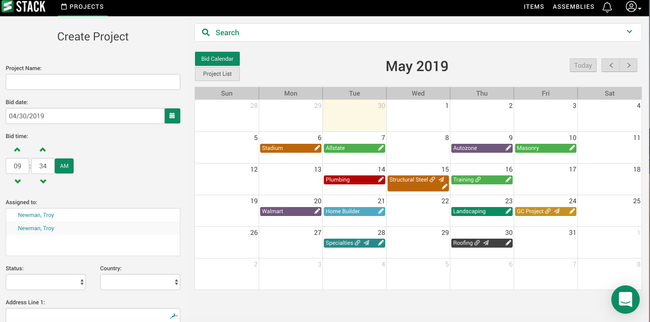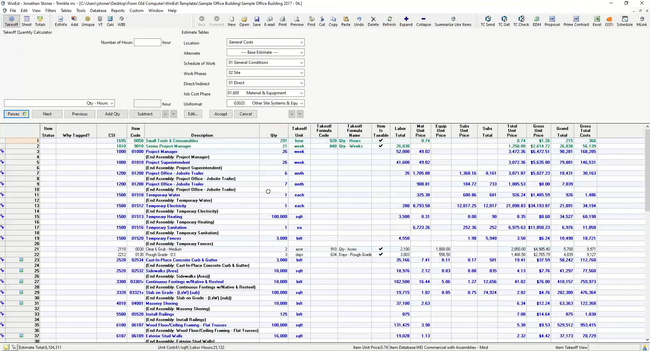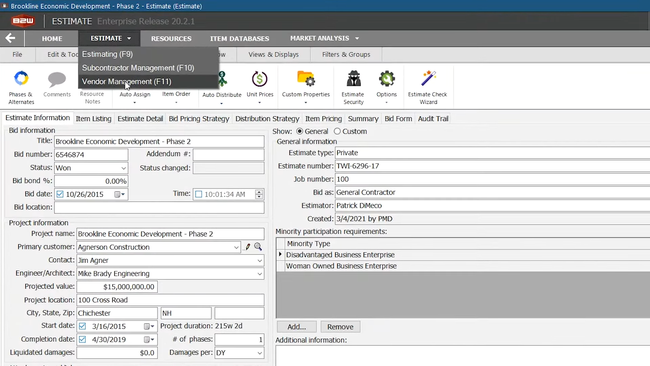Construction estimating software automates project cost calculations, enhancing bidding accuracy and efficiency. We utilized our in-house software review methodology to rank top construction estimating software, focusing on value, customization, and features like labor, materials, and equipment cost tracking.
- STACK: Best Overall
- WinEst: Best Customization Options
- B2W Estimate: Best for Heavy Civil Construction
- PlanSwift: Best for Excel Users
- Houzz Pro: Best Client Management
- Buildxact: Best Takeoff Tools
1 STACK - Best Overall
Why we chose it: STACK is our top overall pick because it’s a construction takeoff and estimating software with dedicated tools and automation features. These include Autoname and AutoCount capabilities, a template library for quick project setup, and customizable grouping and labels for organization.
STACK allows for detailed cost estimating with items and assemblies, personalized estimates including labor and materials, and various filtering and reporting options. Users can build and customize branded client quotes and proposals using data directly from estimates, with subtotals, grouping, and alternative bid options. STACK ensures ideal profit margins and delivers professional-branded PDFs to enhance credibility.
2 WinEst - Best Customization Options
Why we chose it: WinEst offers customizable work-breakdown structures, filters, and standardized estimate templates, including labor and equipment rates. We added WinEst to our list because it can easily accommodate the unique requirements of each construction project. Its support for simultaneous editing by multiple estimators promotes collaboration, valuable for extensive projects requiring collective expertise.
WinEst’s core strength is its database-driven estimating capabilities, enabling detailed project estimate management and integration. The software’s user-centric design also streamlines complex tasks like cost information gathering, bidding, and purchasing, useful for both large corporations and smaller firms. Its scalable solutions, available in various versions to meet different organizational needs, ensure a tailored fit for any construction firm.
3 B2W Estimate - Best for Heavy Civil Construction
Why we chose it: B2W Estimate is tailored for heavy civil construction companies, offering a blend of speed, accuracy, and strategic bidding tools. These include a centralized database for cost structures and data, support for multi-estimator collaboration, and integration with electronic bidding systems and various accounting/ERP platforms.
Additionally, B2W Estimate supports a range of estimating and bid formatting methods, including flexible pay item, Work Breakdown Structure (WBS), or hybrid approaches. The platform allows multiple estimators to work on a bid simultaneously, enhancing collaboration and efficiency. Further enhancing its suitability for heavy civil construction, B2W Estimate provides a scalable platform capable of handling extensive databases and complex functions efficiently.
4 PlanSwift - Best for Excel Users
Why we chose it: We picked PlanSwift for its integration capabilities with Excel, enhancing its utility for creating detailed bills of quantities and estimates. The software offers exact measurements with minimal effort and customizable features, such as assemblies, labor, material, and tax calculations. Planswift also allows users to create custom formulas and reports, making it adaptable to various project needs.
PlanSwift includes a single-click tool that reduces the time traditionally taken for takeoffs and estimates. Additionally, it provides a wide array of takeoff tools, including auto-count, drag-and-drop assemblies, and scalable point counts. These cater to diverse construction specialties, from general contracting to specific trades like concrete, drywall, and electrical. PlanSwift can overlay takeoffs on aerial earth images and create material lists and customer quotes directly from takeoffs, providing a comprehensive approach to project estimation.
5 Houzz Pro - Best Client Management
Why we chose it: We went with Houzz Pro because it enhances client management for construction professionals. The platform aids in professional client interactions by enabling estimate previews before sending, including professional branding and customizable templates. This feature goes a long way in building trust with clients and winning more jobs.
Houzz Pro has many more customizable features, from adding new line items and images to reordering columns and inserting terms and conditions. This flexibility ensures that estimates can be tailored to specific project needs, enhancing clarity and reducing time spent online. Overall, the software’s design aims to reduce administrative time significantly, allowing for better focus on client relations and project execution.
6 Buildxact - Best Takeoff Tools
Why we chose it: Buildxact is worth mentioning for its advanced takeoff tools. The software enables users to perform takeoffs directly from PDFs, storing all necessary information for future use and avoiding redundancy in work. This feature alone makes a considerable difference in how bids are assembled and communicated with dealers, streamlining the overall bidding process.
Additionally, Buildxact provides tools to create estimates, invoices, and receipts that look professional, catering to users who prioritize presenting their business in the best light possible. The platform allows for customized client quotes and helps users achieve estimation accuracy within a very tight margin.
What Is Construction Estimating Software?
Construction estimating software streamlines calculating total project costs, including materials, labor, and equipment. Estimates are created by calculating labor, material, subcontractor, and equipment costs to find and submit a bid price for a project.
Considered to be a subset of construction management software, estimates generated via construction estimating software will turn into a construction contract. These construction estimates can be created via various templates preloaded into the software–allowing you to add your company logo, client information, line items for goods and services, and varying terms and conditions of the agreement.
Engineers, architects, and construction managers will utilize cost estimating software in the construction field for overall bid management but also for any need to create a cost estimate. Beyond job cost estimation, construction estimating software can provide payment tracking, report generation, and building schedules.
More advanced software options are also available, such as building information modeling (BIM software). This type of solution creates 3D models used to plan, design, construct, and manage buildings or infrastructure.
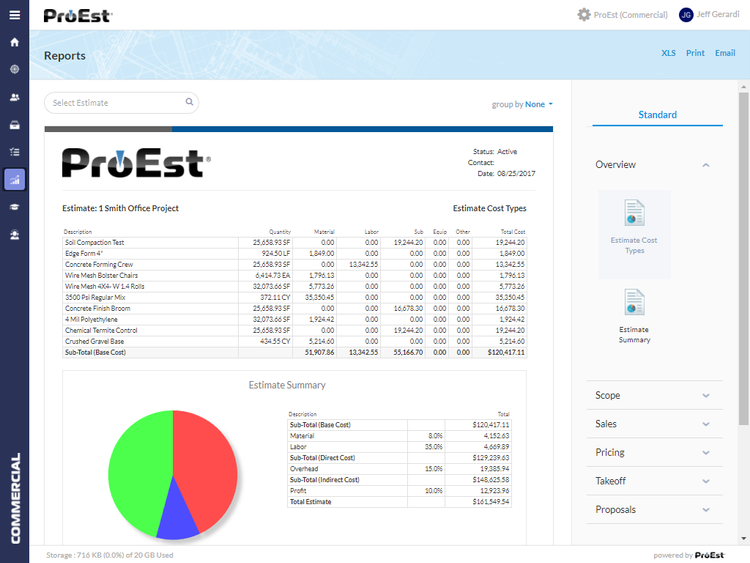
Features of Construction Estimating Software
| Functionality | Definition |
|---|---|
| Labor cost tracking | Quantification for employee hours and job-specific rate management |
| Material estimating | Calculation of material costs based on defined material base rate costs and input of quantity requirements |
| Subcontractor estimating | Calculation of costs likely to be incurred for payment of subcontractors in the performance of job responsibilities |
| Equipment cost estimating | Cost calculation capabilities for the purchase or rental of equipment required to complete job work |
| Digital takeoff | Digital takeoff allows for dimensional information to be extracted from blueprints and converted into a list of required materials and the associated costs for those materials |
| Estimate document management | Document management capabilities for the storage and retrieval of job estimates |
| Estimate to quote conversion | Capabilities enabling the translation of job cost estimates into customer-facing quote or proposal documentation |
| Historical estimating | Estimating which uses inputs from previously performed work to inform likely costs of job work |
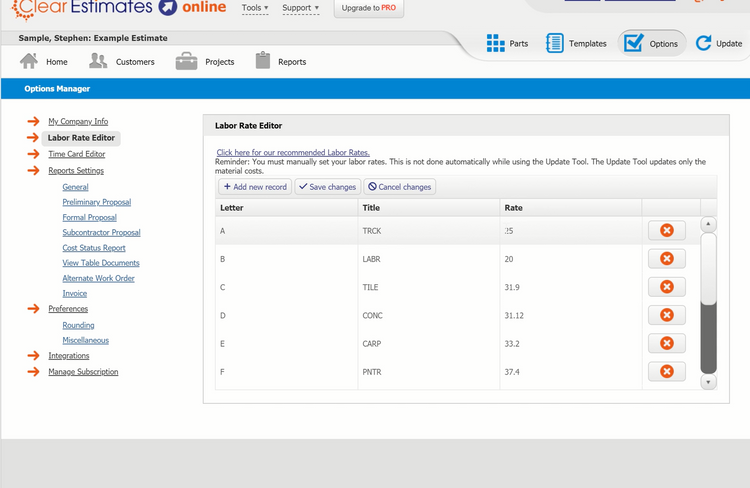
Benefits of Construction Estimating Software
Construction estimating software benefits include:
Improved Bidding and Job Cost Forecasting
Job cost estimating features collect and analyze pricing data to estimate the time, money, materials, and labor required to build a physical structure. Failure to do so can have a financial impact on cost overruns and a failure to complete a project.
Construction estimating software provides standard processes to build cost models for executing job-based work. While used most commonly in the construction industry, it can also apply to other industries that conduct work on a project basis and need to determine the likely costs of completing the work.
Bidding and job cost benefits provided by construction estimating software include:
- Reduced labor costs by saving time spent on preparing job estimates
- Improved ability to ensure project profitability by producing more reliable estimates using automated calculations and historical performance data
- Higher bid win rates by turning around quotes to customers more efficiently
- Lowered job costs through identification of cost control strategies such job selection, strategic sub-contracting, and alternative material/service sourcing
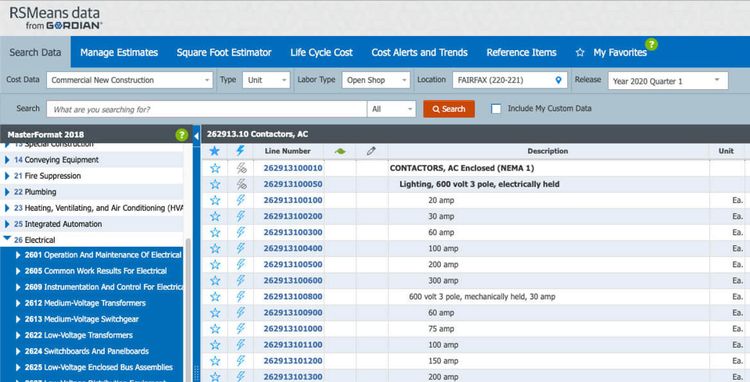
Create Digital Takeoffs
Construction takeoff refers to functions that let the user extract material counts and estimates from digital blueprints. Also known as digital takeoffs, this feature can scan blueprint file types such as SVG, DXF, DWG, and PDFs–allowing blueprints to become digital files that can be edited. Information can then be pulled from the digital blueprints that help calculate quantities and measurements.
A capable estimating program lets you easily use blueprints to identify the project’s scope. With the scope identified, you’re able to reverse engineer back to a parts list and more reliably create data-driven price estimates. The same process works in relation to labor costs. As you break a job into smaller sub-components, you’re able to more accurately project costs.
The materials usually included in a construction takeoff include:
- Lumber
- Concrete
- Roofing
- Blocks
- Pipes
- Wire
- Fixtures
- Flooring
To determine how an item is quantified, you’ll need to either conduct a simple count, provide accurate length requirements, or use area for components that are provided in volume (such as concrete). Digital takeoff capabilities will perform these complex equations to arrive at the accurate quantities needed.
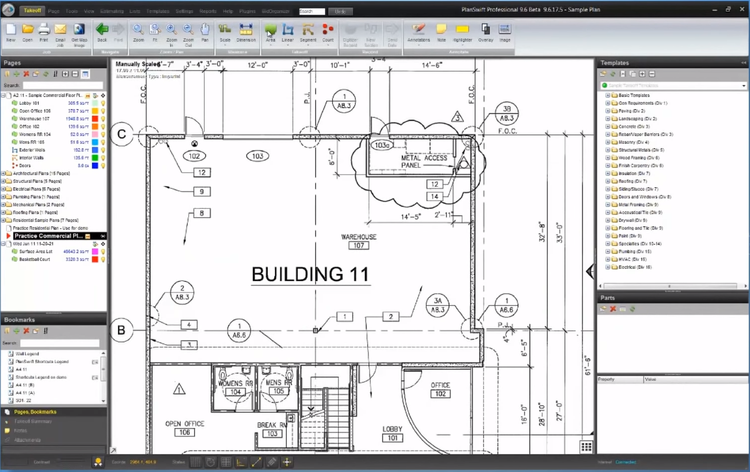
Create What-If Scenarios
A what-if scenario is a speculation about how a specific job or project might be handled. With regards to construction estimating, it can better help prepare you for the best-case and worst-case scenario when it comes to determining the price of a construction job. By reviewing each stage of the project lifecycle, managers should be able to better predict the outcome of a proposed construction project.
What-if scenario analysis can improve project management by evaluating possible outcomes and helping your business make more informed decisions and actions. The goal in doing so is to reduced uncertainty, or better preparing your business when it needs to respond to different situations. With improved project predictability, your business should have a better grasp on both simple and complex factors to expect with your upcoming projects.
For example, there may be a scenario where a construction business is bidding on road construction. They have the measurements of the road but may want to present the customer with a choice of materials. A flexible construction estimating program will help create two different scenarios showing the cost of each, not just in labor and materials, but also maintenance over the life span.
In another scenario where a kitchen is being remodeled, the ability to quickly swap in and out different cabinet styles, countertops, appliances, etc–without redoing the whole bid–allows both the flexibility to adapt to changing customer demands and to do so quickly.
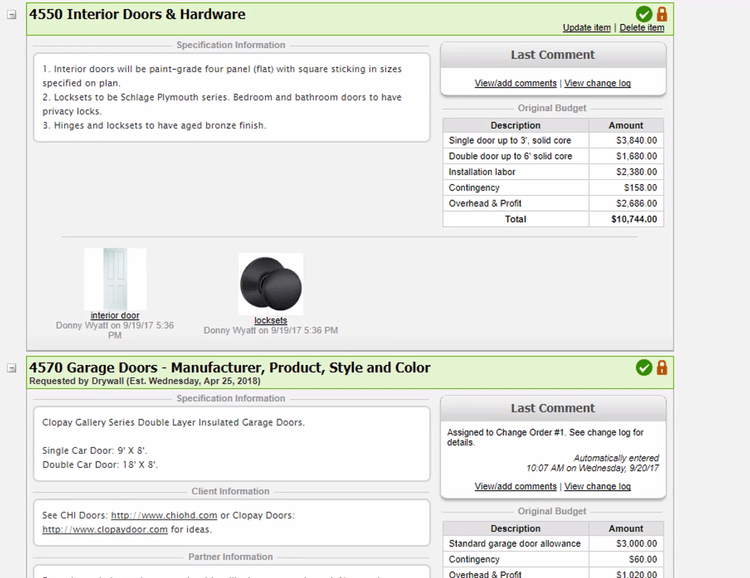
Using Historical Cost Data to Generate Accurate Estimates
Keeping records of your historical cost data can save time in preparing new estimates for similar work. These past estimates can accurately predict the cost of your project as long as the cost of supplies and labor doesn’t fluctuate too much.
Cost estimators can turn to regularly published construction cost data for comparative analysis. This includes catalogs of vendors’ data, periodicals, commercial cost reference manuals, and digests of actual project costs. Alternatively, your business can look into your own historical efforts to determine estimates. This comes in handy when doing work for the same client, or doing the same type of construction jobs over and over.
Construction estimating software will include a computerized database of previous estimates and bids. The most basic of options will have a built in historical database that can allow you to reference quantities, costs, crew and machine productivity data from previous projects. A more advanced option may offer capabilities such as Earned Value Analysis (EVA), which can measure a project’s progress at any given point in time and better forecast the final cost as you move your way through the project statuses.
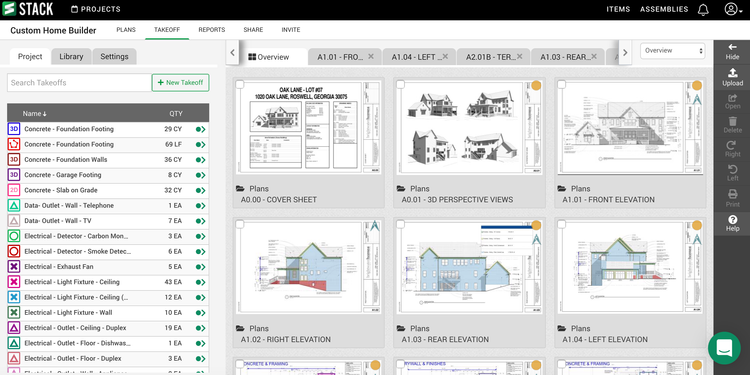
Examine Estimated Job Costs in Depth
Both construction and manufacturing projects can be priced via process costing or job costing. Process costing will assign costs to every step involved in a manufacturing project based on historical data. Job costing breaks down the specific labor, materials, equipment, and subcontractor costs needed and their associated calculated costs.
Process costing works best in industries with more uniform costs, while job costing tends to be more accurate due to using more historical data and less guesswork. This is why job costing is more prominently found in the world of construction estimating.
Dedicated job cost software can help save time on job-costing calculations done via manual processes such as spreadsheets. Most estimating software will also tie in with job cost processes and help your business better price jobs accurately, submit timely estimates, calculate realistic profit margins, and track costs in real time.
A good estimating program will give you an analytical foundation to understand your costs in different areas within the job. Breaking down estimates and costs by sub-projects, physical areas, or other organizing units provides a wealth of info for understanding which job elements are driving the profit or loss on the project overall.
You may need to segment costs to track the resulting revenues to identify payback. For instance, if you’re a builder looking to lease your own space, it’s typically imperative to set up rates built on an understanding of what’s required for per unit cost recovery. This would require a need to track the cost of the overall project–by building or by unit.
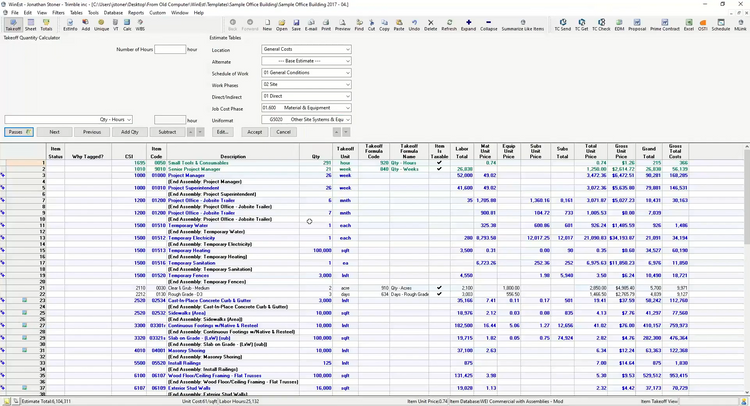
Types of Construction Estimate Templates
There are four main types of construction estimates, and which one gets used will usually depend on the stage of the project.
- Preliminary Estimate: Non-final estimates that present a variable range for how much a project will cost. Usually done at the start of a project using limited information and based on past projects.
- Detailed Estimate: The first official estimate is created, usually as a modified version of the preliminary estimate. Includes more details such as quantities, costs, and rates. May also include drawings and other specifications.
- Quantity Estimate: Includes a list of quantities needed for all materials to complete a project. This is determined by multiplying the dimensions of project drawings by the rate for an item of work.
- Bid Estimate: The final bid that is submitted to a prospective client. Usually created with a combination of numbers from past estimates as well as providing the best possible price in order to win the bid.
The best construction estimating software will help create whatever type of estimate your business needs. Most will come with templates that will autofill with your company and your client’s information. These templates will usually differ depending on the type of work you’re doing, such as new home cost, general construction, remodeling, and more estimating types.
Types of Construction Estimating Software
Examples of industry-specific estimating software include:
- Earthworks Estimating Software: Assists engineers with forecasting costs related to earthwork projects such as surveying, landscaping, and excavating.
- Electrical Estimating Software: Helps electricians, electrical engineers, and contractors plan expenses for streamlining electrical work projects.
- Flooring Estimating Software: Assists floorers with determining costs for residential and commercial flooring jobs. Includes floor plan database tools and tile visualizations.
- Manufacturing Quoting and Estimating Software: Generates quotes based on the costs for materials, labor, and overhead
- Plumbing Estimating Software: Identify the costs of pipe replacement, repairs, or parts upgrades for plumbing projects.
- Remodeling Estimating Software: Estimate the cost of residential projects.
Electricians, plumbers, manufacturers, builders, and HVAC companies all deal with estimating on a daily basis. However, some of the elements of the estimating process can be different in each environment. A program written with your industry in mind can help shorten the learning curve for your company’s estimating software users.
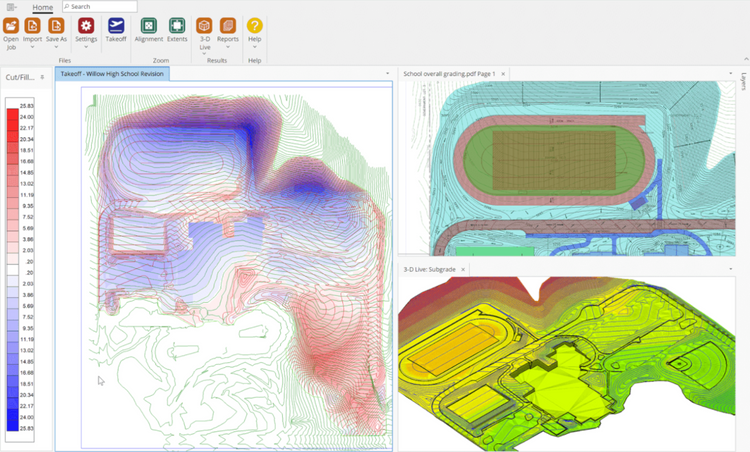
Does QuickBooks Have An Estimating Tool?
QuickBooks Online has been used successfully by thousands of construction companies. While not an industry-specific construction management software, the solution can handle accounting for most construction businesses. This includes managing job costs, tracking time and expenses for projects, and running the appropriate reports on a job/project level.
Intuit, the developer of QuickBooks, does not offer a dedicated construction estimating tool. However, QuickBooks solutions do have the ability to create estimates as part of their overall accounting package. Estimates created in QuickBooks can be used to create a bid, proposal, or quote. These can later be turned into a sales order or an invoice. Creating an estimate is part of the usual A/R workflow in QuickBooks.
Given QuickBook’s popularity, several highly rated construction estimating software options will integrate with QuickBooks, allowing you to keep the solution as your primary accounting software but get the estimating capabilities your business demands. Some options recommended by QuickBooks themselves include:
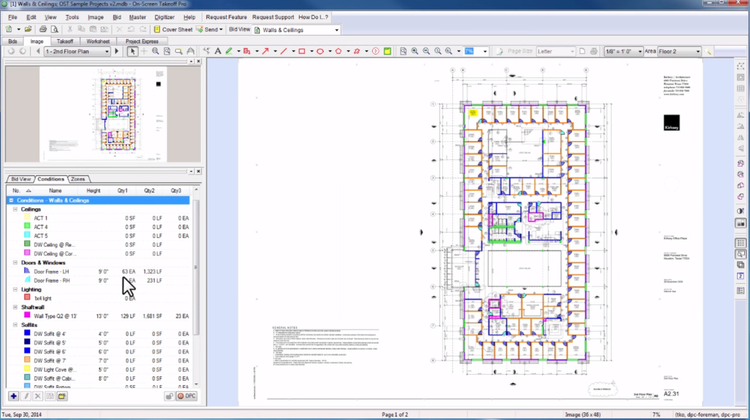
How Much Does Construction Estimating Software Cost?
Construction estimating software pricing varies significantly based on the level of features and support required.
- Annual costs range from as low as $2,000 to $15,000 for basic packages.
- Mid-range options span between $15,000 and $50,000.
- High-end solutions can cost between $50,000 and $150,000 per year.
- Enterprise-level pricing exceeds $150,000 annually.
Additionally, adding takeoff capabilities to these packages typically incurs an extra annual fee ranging from $3,000 to $10,000, depending on the complexity and integration needs of the software.
Frequently Asked Questions
What does construction estimating software do?
Construction estimating software assists in calculating material, labor, and equipment costs, as well as creating detailed project bids.
How much does construction estimating software cost?
Construction estimating software pricing spans from $2,000 to over $150,000 annually, with takeoff features adding $3,000 to $10,000 to the base cost.
Who uses construction estimating software?
Estimators, project managers, and contractors across the building industry use construction estimating software to enhance accuracy and efficiency in project planning and bidding.
What is the best construction cost estimator?
STACK, WinEst, and B2W Estimate are recognized as some of the best construction estimating software due to their specialized features and capabilities. These products are optimal for their automation tools, customizable options, and industry-specific functionalities.

